Having a low-maintenance back or front garden is important to many people, especially those looking to save time and money on upkeep. For a garden to achieve this, it is important to have a mix of the right materials and flora without having to compromise on aesthetics.
In this article, we will cover: the benefits, design, budget, accessibility and top tips.
What is a Low-Maintenance Garden?
A low-maintenance garden is an outdoor area that requires little upkeep and money to look after. Things that can help create a low-maintenance space are:
- Limiting the amount of different plant species and weeds.
- Keeping a smaller lawn area.
- Having a larger decking area, using Composite Decking Boards or paving.
- Installing water features such as a sprinkler, fountain or pond.
The Benefits of Low-Maintenance Gardens
Some gardens require lots of upkeep, and often people will choose to hire a gardener to maintain their outdoor area, saving them time but costing them money. Having a garden that's easy to maintain means there is no need to hire a gardener and the work needed should be minimal.
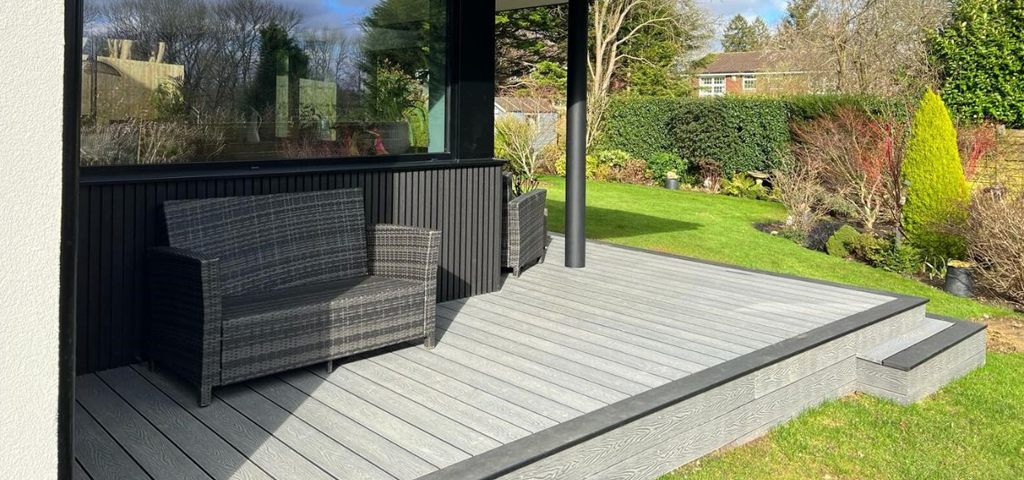
Choosing the Right Plants
Plants are a big part of our gardens, from hanging baskets or pots of flowers to raised beds and fruit and vegetables. Some people may prefer a more relaxed approach when it comes to choosing their garden plants, while others like to enhance their garden by planting a range of flowers and greenery.
Below you can find a few examples that won't take up too much of your time to care for.
Perennials
Perfect for any season, perennials are long-lasting and thrive year after year, so once planted in bare soil they require little attention compared to other plants. They flourish best when planted in autumn or spring.
There are a variety of perennials to discover to best suit your garden and planting them can craft colourful garden borders or flower beds. A lot of them can withstand the elements in your garden all year round but some more delicate plants may need some care during the winter months.
Some examples of garden perennial plants include geraniums, lavender, petunias, pansies, daylilies, roses and delphiniums.
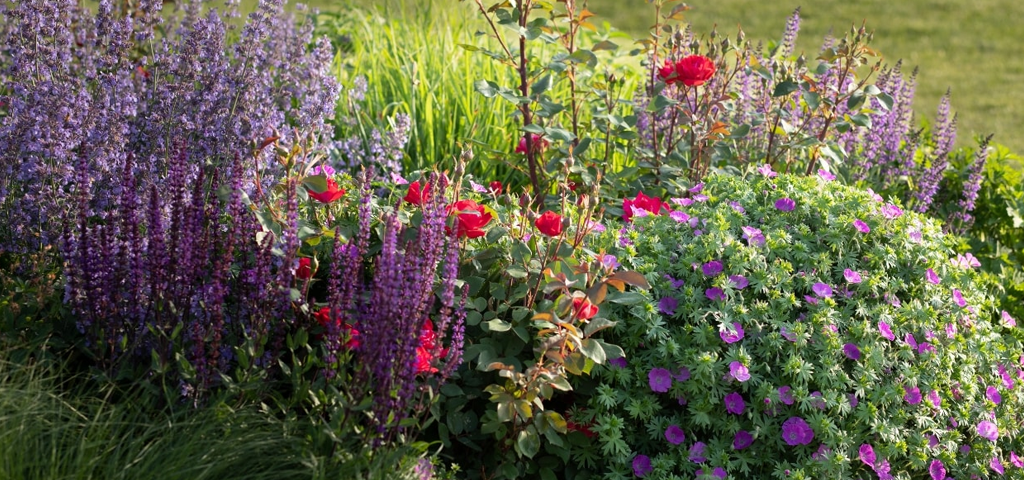
Shrubs
Garden shrubs often play a huge part in your garden design features. Often used by many gardeners to create tidy borders, they are defined by having a woody structure which can provide a framework for the outer parts of gardens.
They can either be evergreen (keep their leaves throughout colder months) or deciduous (lose their leaves in autumn). Weeding around plants will ensure a neat finish to your garden features.
An example of garden shrubs include hydrangea, camellia, rhododendron and forsythia.
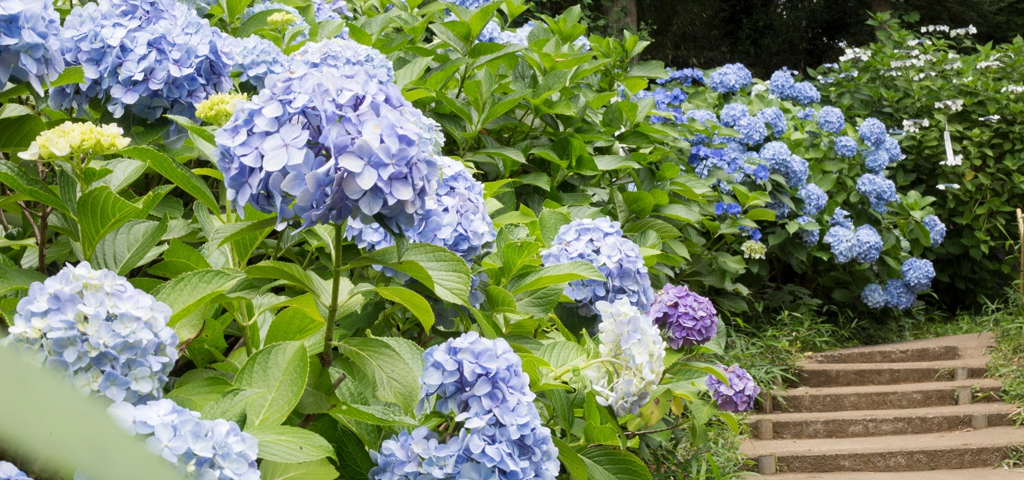
Trees
Trees can add interest to your garden, as well as structure and shade without having to spend time and money on upkeep.
The size of the tree you choose depends on the space available in your garden lawn. Examples of trees that can be planted in your garden include fruit trees (fig, apple, cherry, plum, pear etc), silver birch, oak, willow and more.
Fruit trees are a good option as they don't take up too much space and they can form a small shady spot in the summer (as well as providing a snack when ripe). They can vary in size from small and potted to huge oak trees.
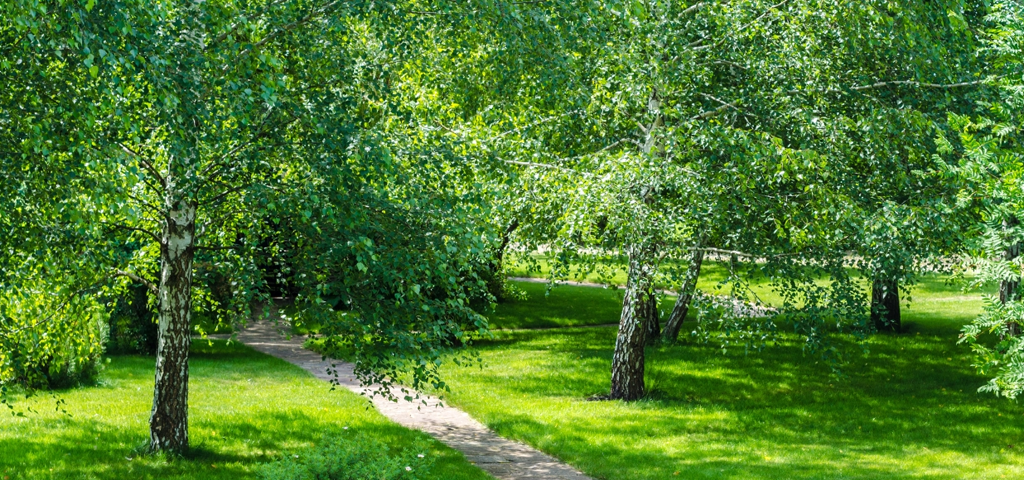
Garden Design Principles
Considering the design of your garden is a good way of making sure it needs less attention. For example; decking is a great way of sectioning areas of the garden and reducing the size of planted areas.
Composite Decking is an affordable and favoured option for transforming your outside space and is a great way of creating a transition between your inside and outdoor areas.
Hard landscaping can be used to create order within the garden and separate flower beds, grass, gravel and paved areas. As well as providing structure, it can help to make the space more manageable.
Outdoor living spaces or garden rooms are another, although more expensive, way to segment your garden and lessen the work needed for the remaining space. It can provide a haven away from the home and can be combined with decking to create a practical and striking garden feature.
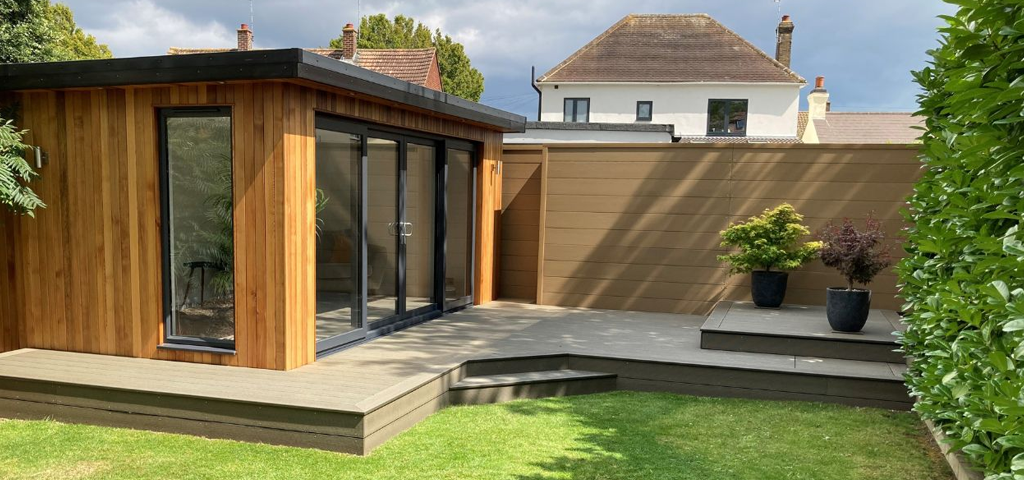
Low-maintenance Garden Boundaries
Most gardens will require some form of boundary, such as hedges or fencing. Depending on the type of hedge you have, they can come with a huge amount of upkeep. This can mean regular watering, gardening, tidying with edging shears and weed control.
Alternatively, a popular fencing material is timber, which can come with the need to stain, paint or treat to keep it maintained.
A solution to reduce your garden maintenance is Composite Fencing, particularly if you have contemporary garden ideas. This type of Fencing is the perfect alternative to timber as there is no treatment, staining or painting needed. Cladco Composite Fencing Panels simply slot together alongside Composite Fencing Posts and Fencing Post Caps for an easy installation process. If you want to create a modern and stylish garden design, Composite Fencing is a great choice.
Our Composite Fencing Panels are available in a range of colours to suit your modern garden design and will help create an undemanding garden. Made from a mix of 100% recycled hardwood fibres and post-consumer plastic, it will still require some cleaning and looking after throughout the seasons but is minimal compared to other materials. Sample Packs are available if you want to have a closer look before making a purchase.
Feeling Inspired? Browse Our Composite Fencing
Elderly and Accessibility
Older people could especially benefit from implementing garden ideas with minimal upkeep, for example; having low-maintenance plants that are easily grown and resistant to a variety of weather conditions.
Including a raised bed in your design is ideal for those with reduced mobility, as well as ergonomic tools that can ease the physical stress of tending to your lawn or garden.
As well as this, automatic watering systems can be utilised to take away the adage of watering the plants regularly, whilst paving could also be used to make navigating around the garden easier.
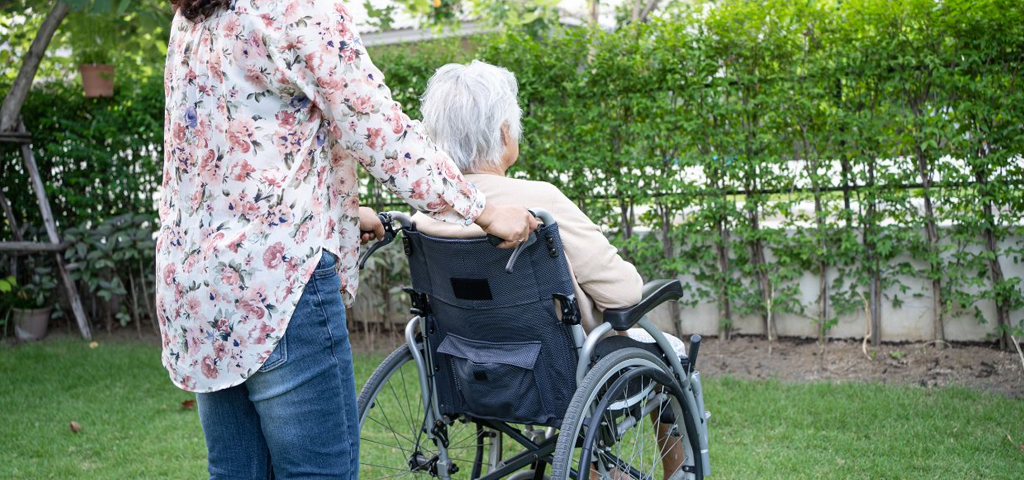
Useful 'Smart' Technologies
Smart technologies can be a great way to reduce future maintenance, and there are many kinds to explore. See some examples of smart technologies for your modern garden ideas below.
Automatic Irrigation System
This smart technology enables your plant features, flower beds and lawn to be watered regularly without the need for you to go out and do so yourself. This also gets rid of the need to hire a gardener, for example. You can set irrigation systems to start watering at certain times of the day, so your yard can thrive even when you may not be at home to tend it.
Robotic Lawn Mower
There's no need to push around a heavy machine with this invention. Robotic lawnmowers mean your lawn can be kept tidy without having to lift a finger. It's the perfect gadget for if you are away on holiday and don't want to let your grass grow long and unruly.
Smart Garden Sensors
Smart garden sensors can track soil moisture, sunlight, temperature, and humidity so that you can better care for specific plants. An essential appliance for those who enjoy modern technology and contemporary garden design, this gadget can help guide you as to what your plants need.
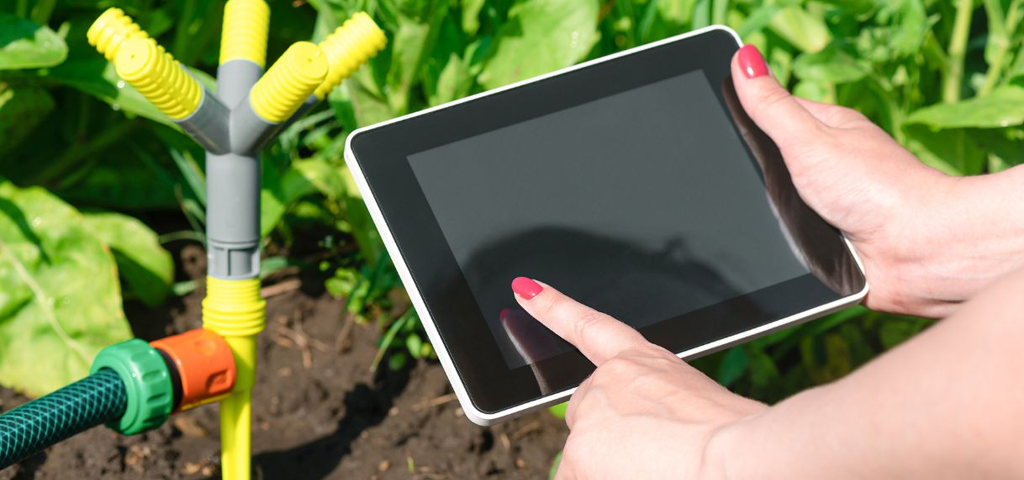
Eco-Friendly Practices
Garden compost is one way that you can be more sustainable when it comes to garden waste. The compost is a great eco-friendly way of feeding your remaining plants and getting rid of your waste simultaneously.
Using mulch to surround your plants can enrich the soil and maintain its temperature, and can be made from decaying leaves, grass clippings, bark chippings and in your own garden!
Xeriscaping is a landscaping method that removes the need for irrigation and is often used in areas with a less accessible or reliable source of fresh water. The process involves using plants that are appropriate for the local environment and the prevention of evaporation or runoff of water where possible.
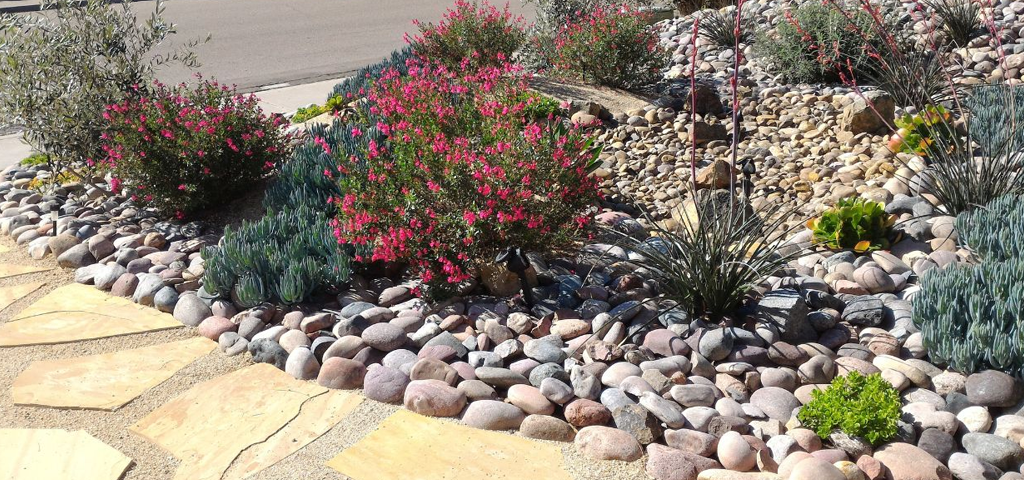
Design Examples
Need some inspiration for your garden's design? Explore some low-maintenance garden design projects below, including summer and modern garden ideas, hard landscaping, paving slabs, gravel gardens, Composite Decking and grass lawns with shrub borders.
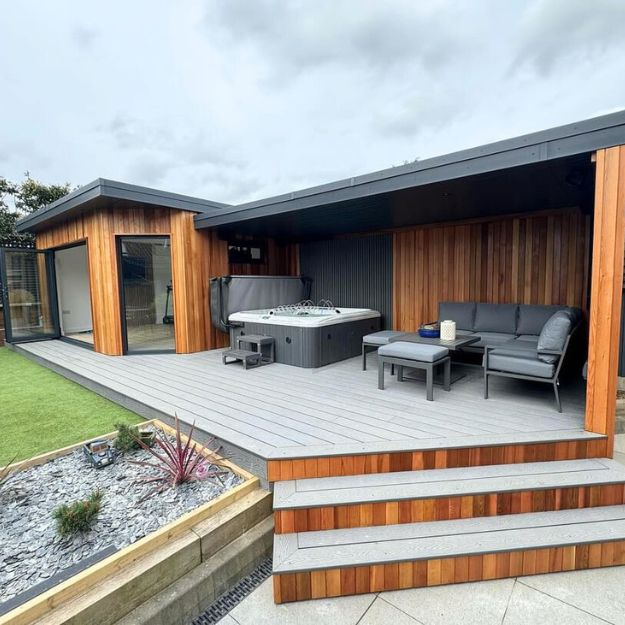
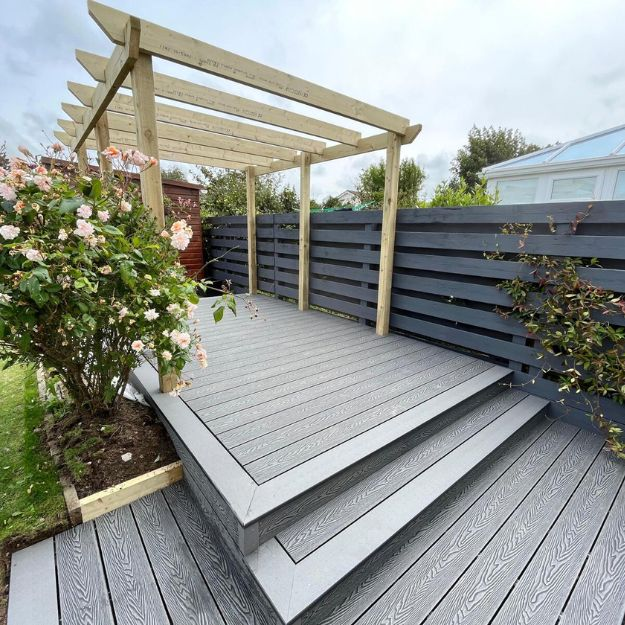
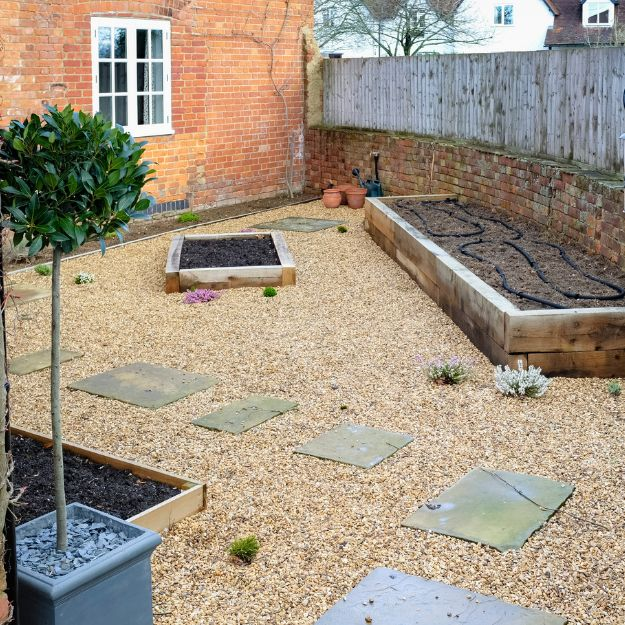
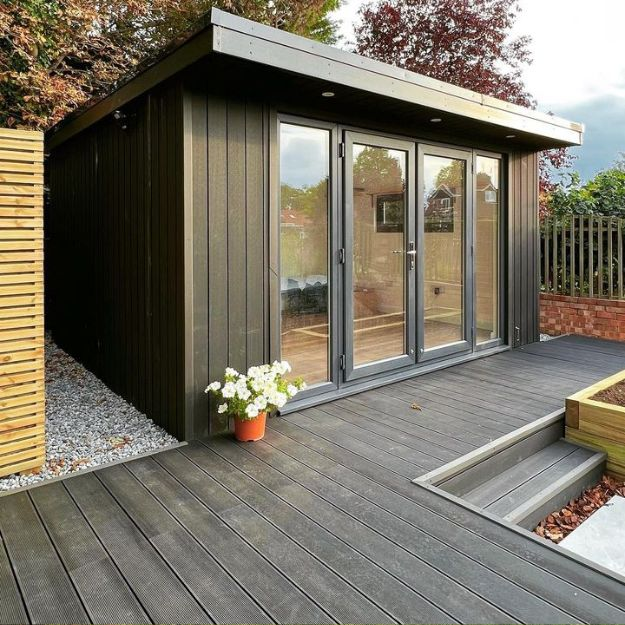
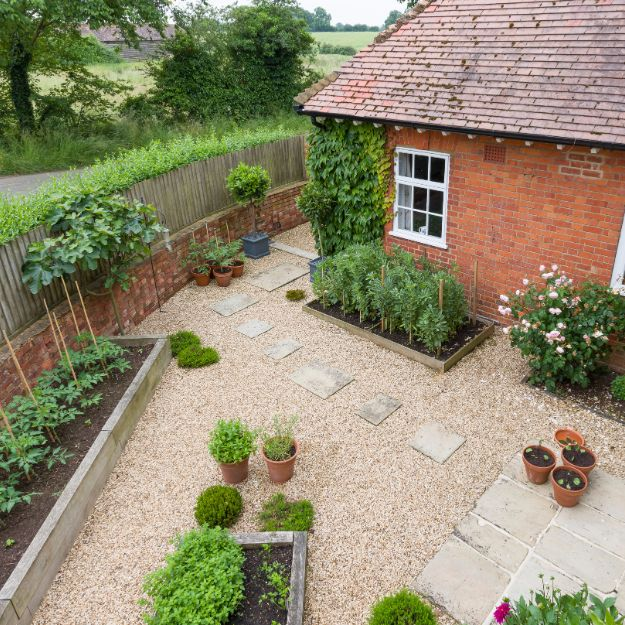
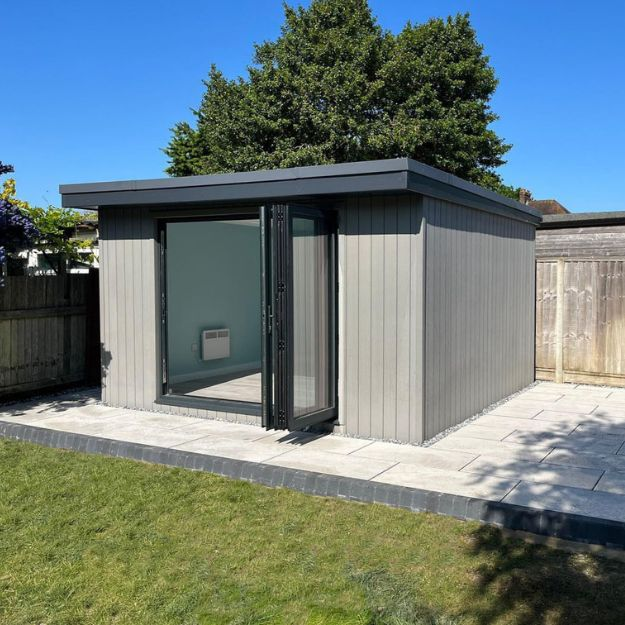
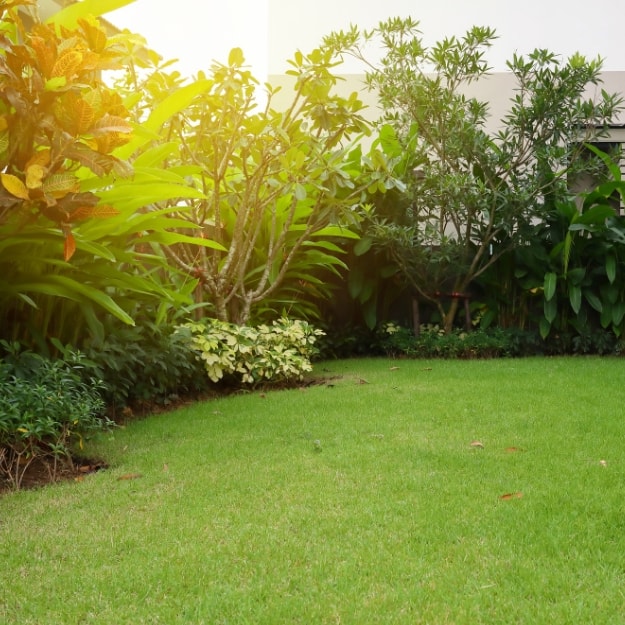
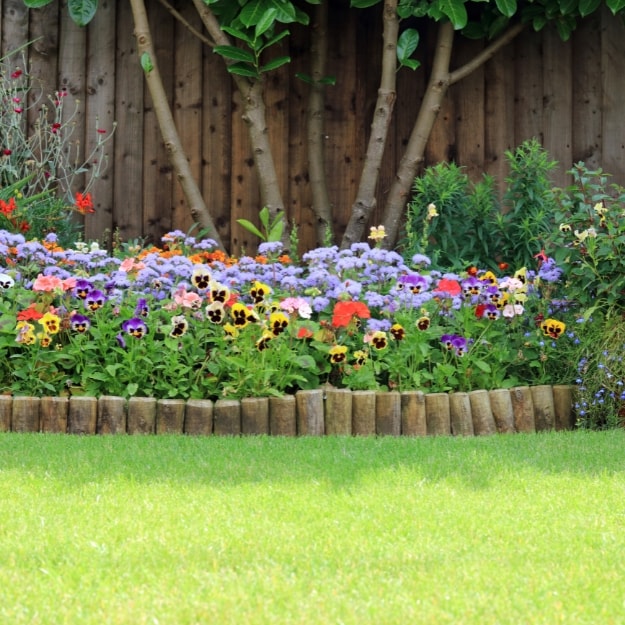
FAQs
What is the most low-maintenance landscaping?
Potentially the easiest way to implement would be adding rocks or extending mulch beds to create boundaries to reduce certain areas.
How do you build a low-maintenance front garden?
Keep it simple! You could focus on one plant variety or limited selection to make the small area pop without having to cater to multiple plant needs.
Conclusion
Making your garden more low maintenance can be done in many ways and using a variety of budgets. Whether it's high-tech gadgets or simply adding rocks, anyone can make changes that make gardening easier and hassle-free.
The benefits of employing these methods can include saving on costs as well as creating a garden that has less of an impact on people's busy lives.
